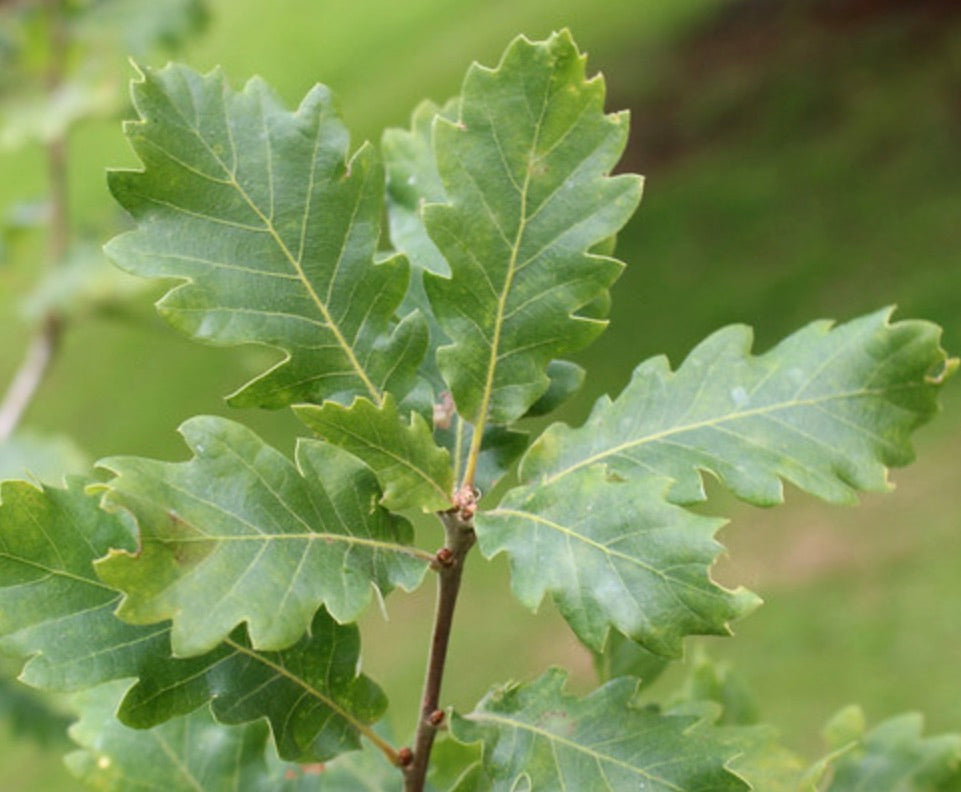- Catalogue Plants
Quercus hartwissiana 15-20cm
Quercus hartwissiana 15-20cm
Couldn't load pickup availability
Plant Description
Quercus hartwissiana, commonly known as Hartwiss Oak or Armenian Oak, is an impressive deciduous tree native to the South Caucasus region, including Armenia and Azerbaijan. This oak species is revered for its stately presence, elegant appearance, and its ecological importance in the region's ecosystems. The Hartwiss Oak features deeply lobed, dark green leaves that turn to brilliant shades of red, orange, or brown in the autumn, creating a stunning display of fall foliage. The tree produces acorns that serve as a valuable food source for wildlife, including birds and mammals. With its adaptability to diverse soil types and its ornamental appeal, Quercus hartwissiana is a remarkable addition to arboretums, parks, and natural landscapes.
Cultivation: Cultivating Quercus hartwissiana, or Hartwiss Oak, can be successful when you follow these essential cultivation tips:
-
Climate: Hartwiss Oak thrives in temperate climates with cold winters and warm summers. It is well-suited to regions with distinct seasons.
-
Sunlight: Plant in a location that receives full sunlight to partial shade. While it can tolerate some shade, full sun is preferable for optimal growth and leaf development.
-
Soil: Hartwiss Oak is adaptable to various soil types, including loam, clay, and sandy soils. Ensure good drainage, as it is sensitive to waterlogged conditions.
-
Watering: Young trees require regular watering to establish deep roots. Once mature, Hartwiss Oak is generally drought-tolerant and can withstand dry conditions.
-
Fertilization: Established trees typically do not require fertilization. However, you can apply organic mulch around the base to improve soil quality.
-
Pruning: Minimal pruning is necessary for Hartwiss Oak. Remove dead or damaged branches and shape the tree as needed to maintain its desired form.
-
Pests and Diseases: These oaks are generally hardy and less susceptible to pests and diseases compared to some other oak species. Monitor for issues and take appropriate action if necessary.
-
Acorns: Allow Hartwiss Oak to produce acorns, which are an essential food source for wildlife, including birds and mammals. This contributes to the ecological value of the tree.
-
Propagation: Propagate Hartwiss Oak from seeds, which should be planted in the fall or stratified before planting. Keep in mind that growing from seeds may take several years to establish.
-
Landscaping: Consider using Hartwiss Oak as a focal point in larger landscapes, parks, or as part of conservation efforts. Its magnificent presence and colorful foliage make it a striking addition to gardens and natural settings.
By following these cultivation tips, you can successfully grow and appreciate the grandeur and ecological importance of Quercus hartwissiana, or Hartwiss Oak, in your garden or landscape while ensuring its health and vitality.
IMPORTANT: Please be aware that picture 1 show adult plant not for sale, the offer is for a plant in the dimension indicated in title description.
Disclaimer: Please keep on mind that the plant may have grown since pictured. Also be aware that most plants change across seasons. If present foliage could have been fallen or change in its color.
Botanical family: Fagaceae
Botanical genus: Quercus
Botanical species: Quercus hartwissiana
SKU:BA-1132-S
Cultivation
Cultivation
Additional information
Additional information
Plant Height: 15-20cm
Plant Diameter:
Picture Taken on:
Pot Size:
Grafted/Not Grafted:


